Certain varieties of garden plants need to be propped up and supported in order to thrive and grow. Bamboo has always been the preferred material due to its strength, availability, and natural appeal. But how long do they exactly last? Read on and decide if it is the right choice to support your garden needs.
On average, untreated bamboo garden stakes last two years before the portion of the cane underground begins to deteriorate. Several factors can either shorten or increase the span, including the bamboo species, relative age, size or diameter, thickness, and environmental conditions.
Tomatoes, melons, pole beans, peppers, and pumpkins are just some examples of plants that require staking to develop. That said, the material is always exposed to the elements. The article includes ways you can prevent the stakes from rotting and the factors that affect its lifespan.
Can You Reuse Bamboo Stakes?
It is possible to reuse bamboo stakes to support a new set of plants if the cane is intact and the bottom end does not show signs of deterioration. Since they have an average lifespan of two years, stakes can be rotated up to two or even three planting seasons.
However, experts have noted that bacteria and fungi may be present on the surface of the stakes, potentially resulting in contamination and infection. Hence, the bamboo should be disinfected before being reused.
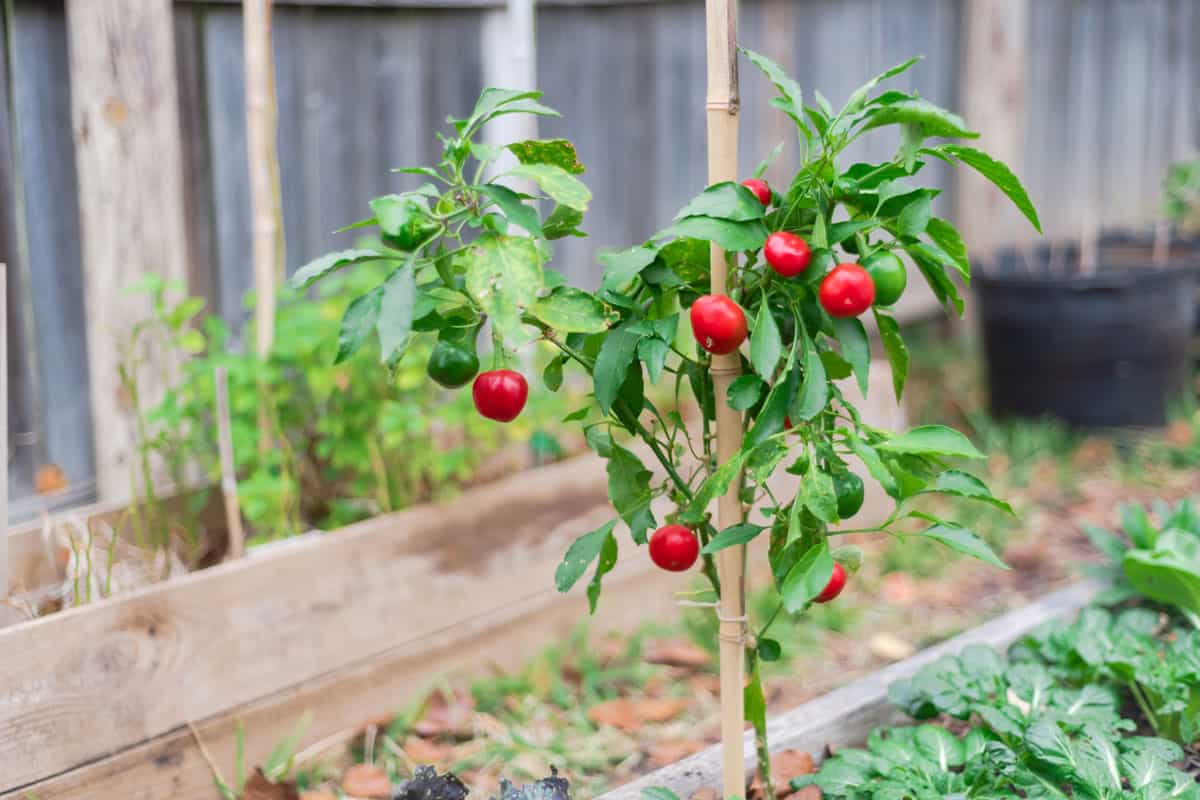
- Before disinfecting, run water over the stakes and brush the surfaces to remove all excess dirt and plant debris.
- Soak the stakes in a solution of one part bleach and nine parts water for 30 minutes.
- Weigh down the bamboo or cover the container to make sure the canes remain under the surface of the disinfectant.
How Do You Keep Bamboo Stakes From Rotting?
There are two ways you can accomplish this, either by traditional or chemical preservation.
1. Traditional Preservation
Villagers have been using traditional preservation techniques that were passed down from their ancestors to the present generation.
Water Leaching
Water leaching involves submerging the bamboos in water for at least three months – it may vary depending on the variety.
The method is used to eliminate or remove carbohydrates present inside a bamboo’s cellular composition, such as starch and sugar, that will otherwise attract insects and pests. Since starch is reduced, a fungal attack is also delayed.
However, when used as a garden stake in a vegetable bed, the material will only have resistance for up to six months.
Smoke
Traditional practice involves smoke preservation – the method has been around for thousands of years. In this process, the stems are placed and stored in the kitchen over the fireplace.
Heat will cause moisture to evaporate and improve the integrity of the stakes. However, the procedure has to be applied on a regular basis to maintain the bamboo structure.
2. Chemical Preservation
There are several wood preservatives that can be used to prolong the life of bamboo stakes. Chemicals with specialized and specific functions are combined to render the bamboo water repellent, protected from insect and fungal infestation, and resistant to early decay.
Most compounds are diluted in water, and the bamboo could either be soaked or sprayed with the solution. Since most of the active ingredients are toxic, a curing time of at least a month is required before they can be used as garden stakes. During this period, the treated material has to be stored under cover while the chemicals are absorbed.
The following compounds are some preservatives commonly applied to wood for outdoor use:
- Copper Chrome Arsenic (CCA)
- Creosote
- Copper Chrome Acetic
- Copper Chrome Boron
- Zinc Chrome
Are Bamboo Stakes Durable?
Bamboo stakes are at least twice more durable than other wood of similar size or diameter. It is lightweight, easily available, simple to work with, and sustainable. To fully appreciate its strength, the parts of the plant used as stakes are discussed in the following section.
Anatomy Of The Bamboo Stem
The bamboo stem or culm is the most utilized part of the plant in gardening and agriculture, construction, and crafts. It has three distinct parts:
- The culm is the cylindrical column that comprises the main stem of the bamboo; its length, circumference size, and wall thickness all determine the strength of the stake.
- Nodes or diaphragms are the solid ring-like protrusions that are intermittently found along the length of the stem.
- The internodes are the smooth hollow portions between diaphragms.
The distance between nodes differs between bamboo species and is an important consideration since it contributes greatly to the strength of the column.
Which Part Of The Bamboo Is Best To Use As Stake?
Essentially, the closer the nodes, the stronger the bamboo.
The base of the culm has the most nodes, the largest circumference, and the thickest walls since it has to support the weight of the entire bamboo. However, it may be too thick to be used as a garden stake.
Bamboo branches grow from the nodes and are primarily found towards the top of the culm. Since the uppermost portion has to bear the weight of the foliage, the nodes are closer, and the internodes are shorter.
Therefore, both ends of the bamboo are ideal for garden stakes, but the relative size would determine which portion best suit your needs.
Check out Garsum Bamboo Garden Stick on Amazon.


Factors That Determine Bamboo Stake Lifespan
![Fresh green bamboo and beautiful bokeh in the forest, How Long Do Bamboo Garden Stakes Last? [Tips To Make Them Last Longer]](https://gardentabs.com/wp-content/uploads/2022/10/1.png)
Bamboo stakes are prone to deterioration and decay simply because of their specific function. Here are the factors that determine their lifespan, and guidelines that you may find helpful:
Age Of Bamboo
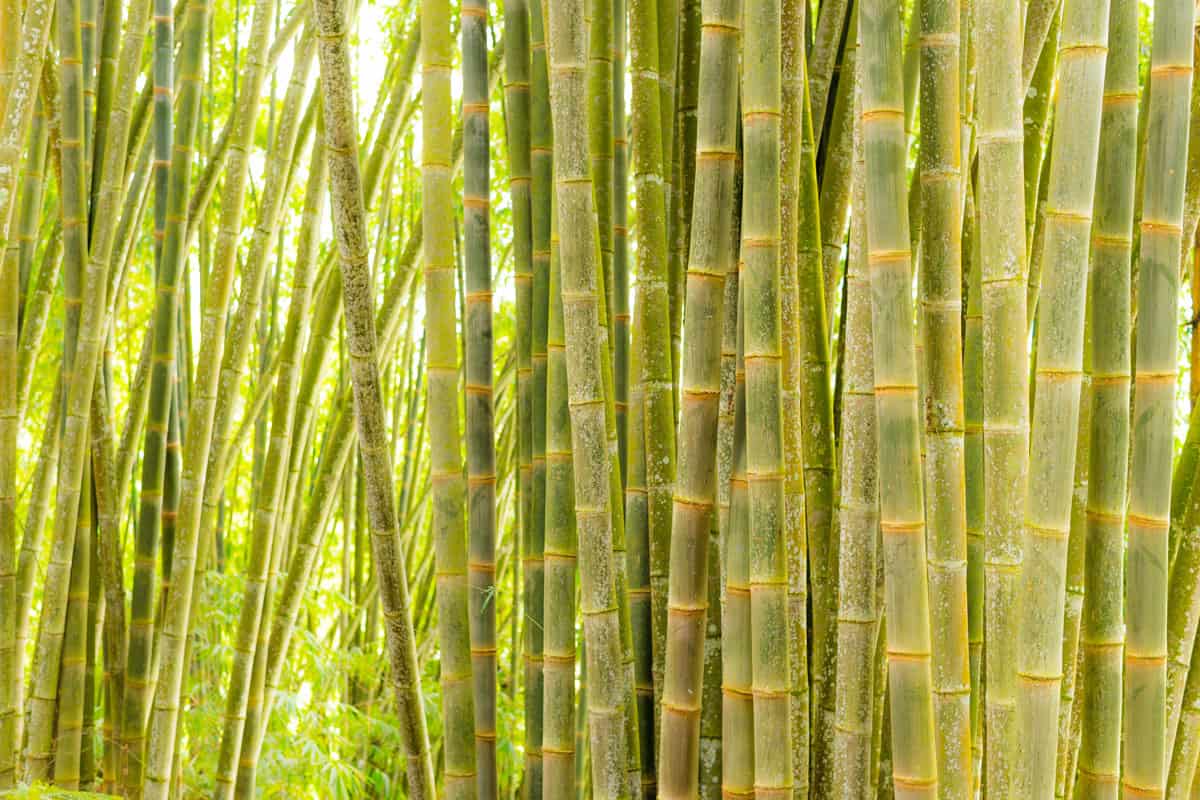
A bamboo’s age is a factor that determines the culm’s durability and lifespan. A young plant has thinner walls as compared to mature ones, making them more susceptible to early rotting or decay.
Old bamboos are less sturdy and will soon begin to dry, losing its structural properties. It is suggested to use garden stakes that have already reached maturity during harvest since the material will last longer.
Maturity is reflected in the color of its foliage and stems, the appearance of mosses, and the shedding of the culm leaves. It is important to note that physical attributes of mature bamboos vary from each species.
That is why it is recommended to compare the appearance of young (deep green stem) and old bamboos (filled with fungi and mosses) with mature ones to determine if the culm or stem is already fully developed and is not over-matured.
Relative Size
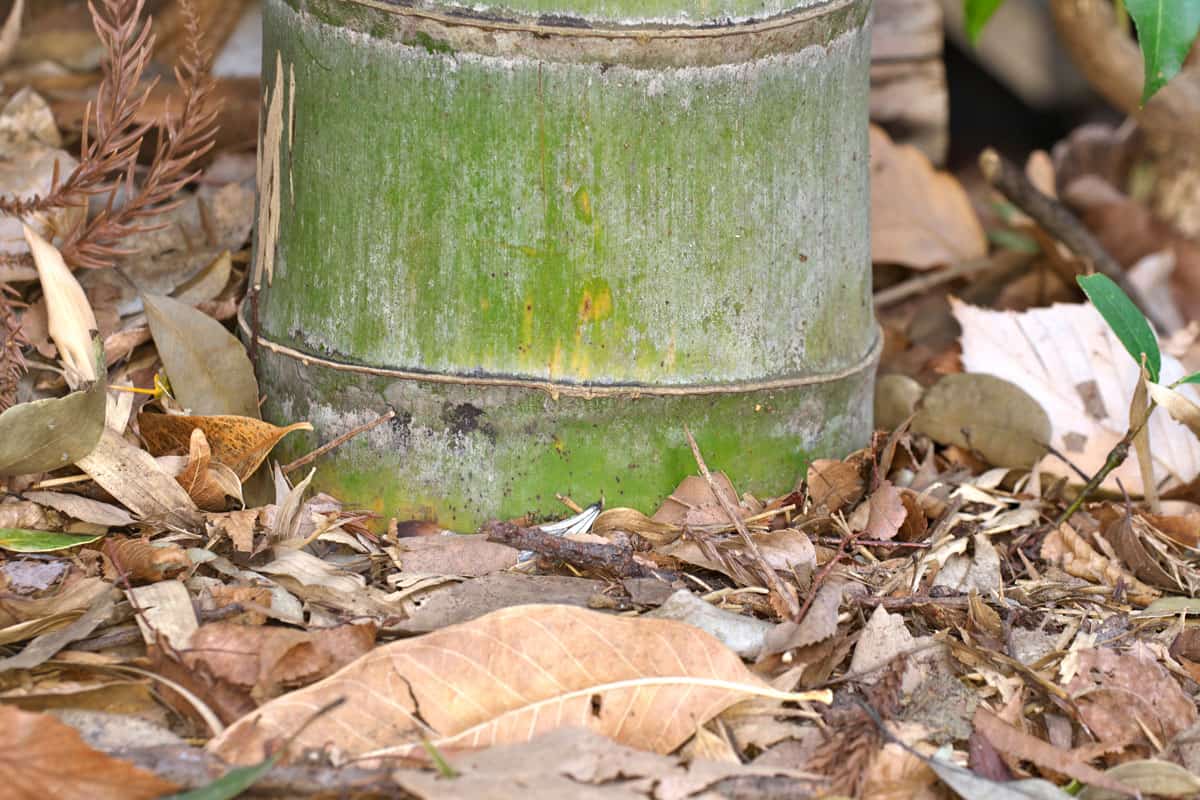
The wall’s relative thickness and the distance between nodes will ultimately determine how well the stakes fair when exposed to the elements.
The thicker the walls, the less hollow the bamboos are, and the better structural foundation it possess. If the nodes are intermittently closer, they improve the stem’s rigidity and tensile strength, resulting in a more stable stake.
When using bamboo as a garden stake, consider the culm’s or the stem’s thickness. Check the topmost part. If the hole or hollow is too small, then the wall is thick, hence, a more rigid material.
Species Or Variety
The strength of the bamboo is determined by its species or variety. Some cultivars have almost solid walls with relatively small hollows and nodes that are considerably closer. When used as a garden stake, these varieties will last longer.
Consider using the Colombian timber bamboo (Guadua angustifoila) since it features all the good qualities of bamboo.
Environmental Factors
Generally, environmental conditions contribute greatly as to how long stakes last as much as the quality of the bamboo itself.
Since the stake is anchored to the ground, the rate of deterioration depends largely on soil conditions. Moisture retained by a poorly draining medium will accelerate the decay process and shorten the stake's lifespan.
The soil mixture and composition also factor out since a high concentration of organic material naturally involves microorganisms that break down wood and other matter.
Insects and parasites attracted to the specific plant variety that is staked can also affect the integrity of the bamboo over time. Termites or borers and some forms of fungi might attack the entire column.
Frequent watering, as required by some plant species, will naturally shorten the life of the stakes as compared to varieties that need less hydration. All types of wood break down faster when constantly drenched.
The general climate of an area would definitely affect the structure of the bamboo over time. Extremely hot or cold weather would subject the material to more stress and may cause it to break or split. Whereas it is expected to last longer in moderate climates.
How Do You Harvest Bamboo For Garden Stakes?
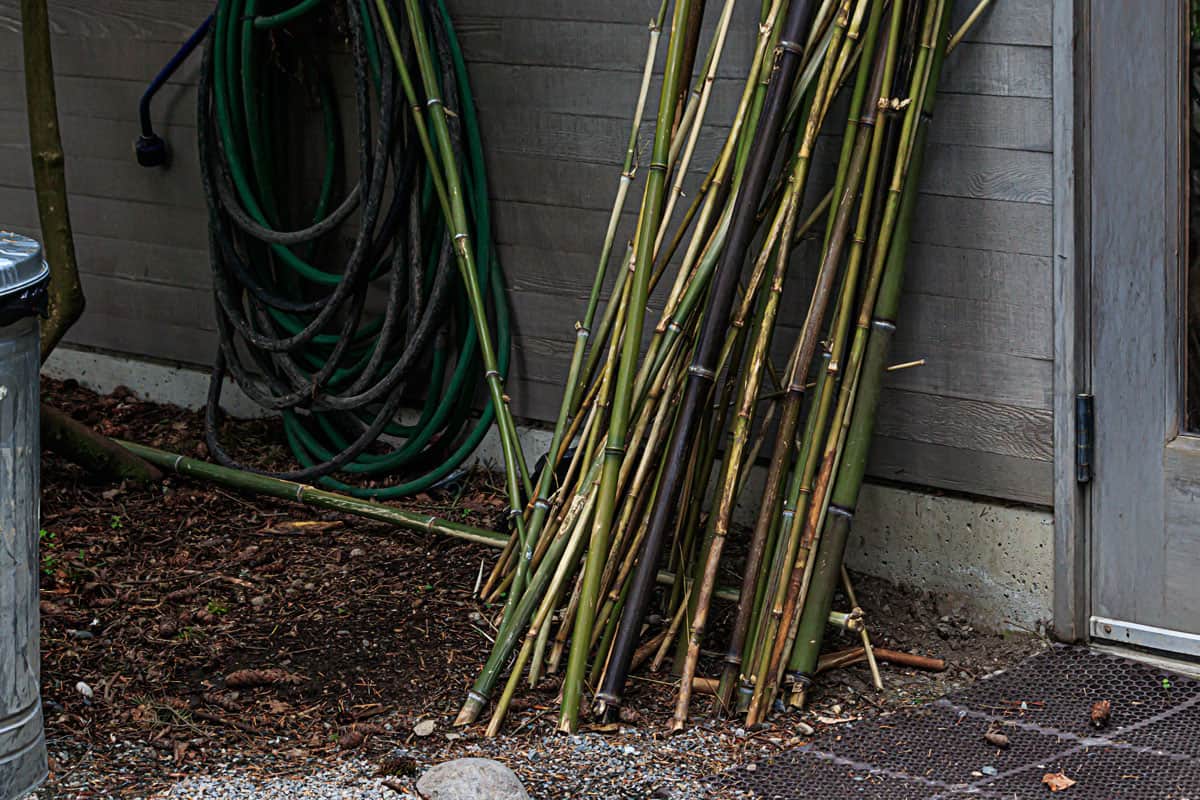
Before harvesting bamboo, you must consider three things: the season, maturity, and the specific portion of the cane that is harvested.
The general season or climate dictates the flow of carbohydrates present in the bamboo. It is ideal to harvest bamboos during the start of the dry or summer season since starch content is low.
As we have mentioned, the age is a factor that determines the plant’s rigidness and strength. Do not harvest young and over-mature bamboos. Look for canes that are not faded and are not deep green in color.
Lastly, when harvesting the stem, cut the portion of the nodes so that the remaining stump is closed and remains protected from pooling water.
In Closing
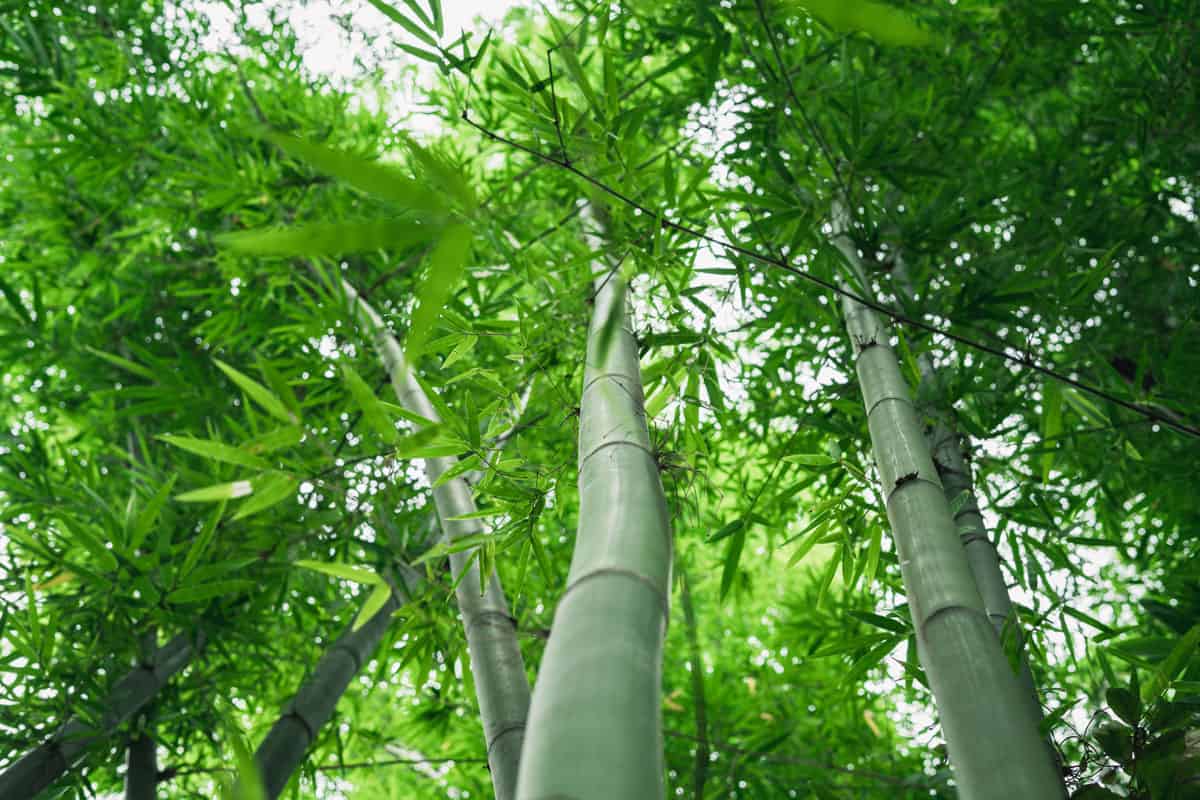
Bamboo is a popular material used as a garden stake. To make the material last, you can either follow the traditional method or use canes that are chemically treated or have undergone the kiln-drying process. We hope the article helped you with the ways you can prevent your bamboo stakes from rotting. Happy gardening!
You might also find these topics informative:
Bamboo Garden Edging [How-To Guides, Tips and Pictures]
Does Clumping Bamboo Have Invasive Roots?
![How Long Do Bamboo Garden Stakes Last? [Tips To Make Them Last Longer]](https://gardentabs.com/wp-content/uploads/2024/02/How-Long-Do-Bamboo-Garden-Stakes-Last-Tips-To-Make-Them-Last-Longer-800x1200.jpg)
